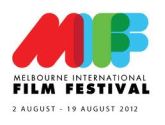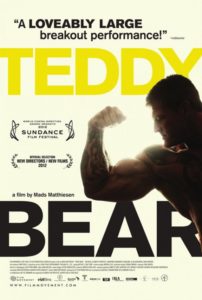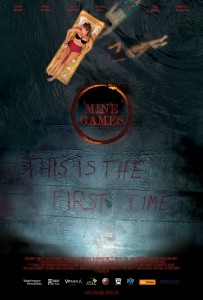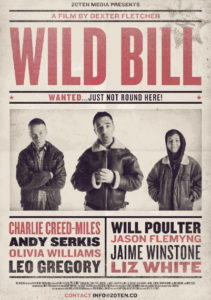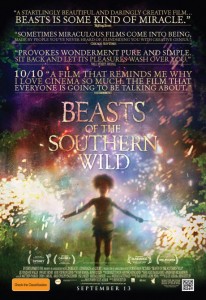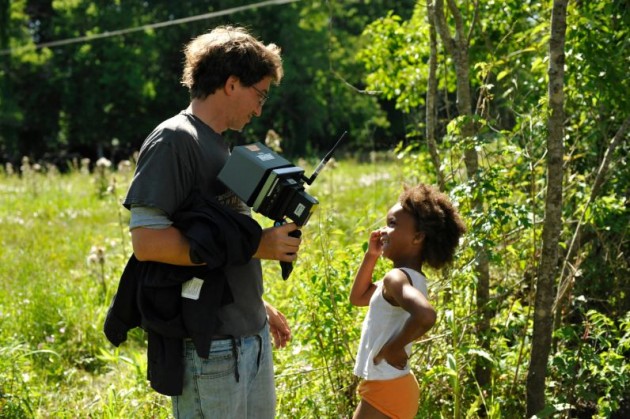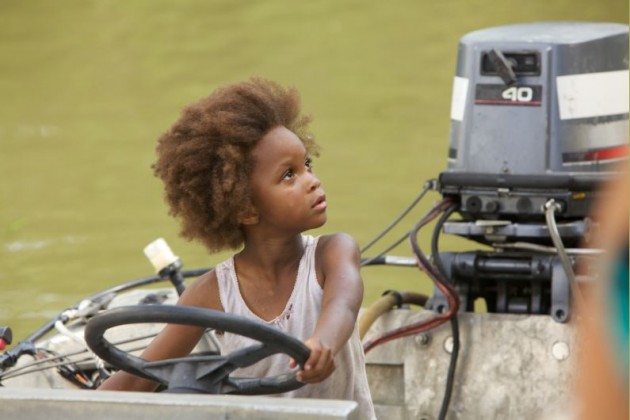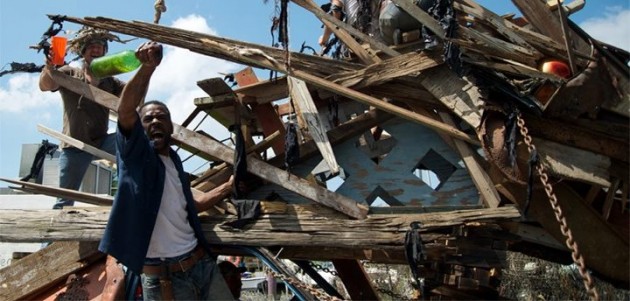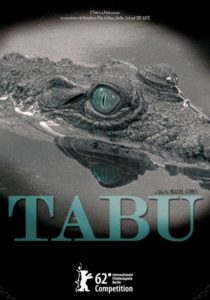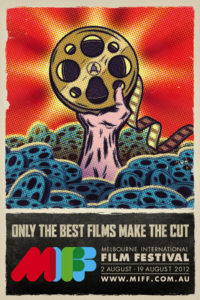 As winter draws to a close, another Melbourne International Film Festival also wraps up, having screened a few hundred new films to Victorians and travellers alike over the last few weeks of fun across the CBD of the greatest city in Victoria. As we begin to roll out our full coverage, here is a snapshot of what we saw, liked or wanted to bury in a dark mine somewhere.
As winter draws to a close, another Melbourne International Film Festival also wraps up, having screened a few hundred new films to Victorians and travellers alike over the last few weeks of fun across the CBD of the greatest city in Victoria. As we begin to roll out our full coverage, here is a snapshot of what we saw, liked or wanted to bury in a dark mine somewhere.
We had a privilege of seeing a number of these already at the 2012 Sydney Film Festival or the inaugural Sundance London, and have reviewed them previously on the site. In addition to this, we visited the festival for the final weekend, and managed to squeeze in another 13 films. We share because we care.
Links to the full reviews have been provided where available, but more will be available in the coming weeks.
★★★★★ – Certified Bitstastic
Beasts of the Southern Wild – Few debut films manage to be saddled with the term “masterpiece” on their first pass, and this singular take on the coming of age story gets almost everything right from the start. The most human of all possible stories is a startlingly original film that will remain a classic for years to come. Full Review >>
Harold and Maude – This one goes without saying, but we did anyway. Hal Ashby’s 1971 classic is playing as part of MIFF’s retrospective program, and this is a terrific chance to catch it on the big screen and spot all the moments that Wes Anderson has a lot to answer for.
Holy Motors – As we say on the film’s official Australian poster, Leos Carax’s art fantasy is one of the most original films of the century. Equal parts magic and insanity, and a reminder of all the things that cinema has to offer.Carax leads us into uncharted territory we might readily call “post film”. Full Review >>
★★★★ – Highly Recommended
Alps – Winner of the Sydney Film Festival Official Competition prize, along with a plethora of other awards, Yorgos Lanthimos’ follow-up to Dogtooth is unlikely to find two audience members in complete agreement. Coupled with absurdity, including an electro-pop remix of the 1960s hit “Popcorn”, Lanthimos may simply be pointing out the craziness of the world we live in. But are you ready for pop? Full Review >>
The Angels’ Share – Ken Loach made a feel-good film. It happened. Winner of the Prix du Jury win at Cannes this year, Loach’s latest collaboration with lawyer/screenwriter Paul Laverty has yielded another lost soul on his last chance, finding hope in bottles of whisky and an unconventional heist. We feel like a drink. Full Review >>
Awesome I Fuckin’ Shot That – After the tragic death of Beastie Boy Adam Yauch this year from cancer, this MIFF tribute to the one and only MCA will also see several other long-form shorts screened, and is a rare chance to see this crowd-sourced picture in a large format.
Bully – Bullying comes in all forms, and at all stages in life, and Lee Hirsch’s documentary about Bullying in the US school system is a must-see for parents, students, teachers and anybody with a pulse.
For Love’s Sake (Ai To Makoto) – Takashi Miike‘s most energetic film of the last few years, fusing music, unrequited love and a bit of the old-fashioned ultra-violence for good measure. Vividly realised with the assistance of regular collaborators cinematographer Nobuyasu Kita and production designer Yuji Hayashida.
Hara-Kiri: Death of a Samurai – Japanese filmmaker Takashi Miike has no less than three films at this year’s MIFF, as this plays along with above’s For Love’s Sake and Ace Attorney. Here he continues to put his own stamp on the jidaigeki genre, switching his penchant for bloodbaths to a serene examination of samurai honour. Full Review >>
Killer Joe – William Friedkin returns with a vengeance in this southern-fried tale of hillbilly murder, rampage and good old-fashioned insanity. Inspired by the excesses of Letts’ script, adapting his own screenplay, Killer Joe might be violent and vile, but it is also sharp, engaging and outright hilarious at all times. Proof positive that Matthew McConaughey belongs in every movie. Full Review >>
Like Someone In Love – Following the painful Certified Copy, Abbas Kiarostami redeems himself with this wonderfully measured character piece. It’s more riding in cars with boys, as he uses conversations between three restrained Japanese personalities (principally veteran Tadashi Okuno and the popular Rin Takanashi) to reveal details about these characters. What is amazing is just how much this minimalist approach completely holds your attention, right up until the ambiguously gripping conclusion.
Moonrise Kingdom – Like most of Wes Anderson’s films, it exist in a bubble of the past that never actually existed except in memory and dreamscapes. Apart from recalling Rushmore, just as directly as the bespectacled clone Gilman does, Anderson is giving us an early signal that his film is about so much more than teenage love. Visually stunning, Moonrise Kingdom is an open love letter to youth of all ages. Full Review >>
ParaNorman – While Pixar have become the masters of making children’s films that adults can also enjoy, Coraline makers Laika continue to prove that it is possible to do it the other way around as well. Originally conceived for Disney in the 1980s, it has an old-fashioned sensibility that effortlessly weaves a wonderful group of characters into a myriad of film and cultural references, set against the timely backdrop of Salem-style witch hunts.
Safety Not Guaranteed – We were lucky enough to catch this one at Sundance London. Charming and funny, this pseudo time-travel dramedy is a delightful and heartfelt retro throwback to a bygone era of filmmaking, drawing inspiration from the Spielberg and Zemeckis films of the 1980s. Based loosely on an Internet meme, the fantastical idea of a man with no education building a time machine in his garage is about as American as it gets. Full Review >>
Side By Side – Keanu Reeves fronts Chris Kenneally‘s insightful and candid investigation into the film versus digital debate, one with no clear winners but a lots of strong opinions from industry heavyweights. Side By Side doesn’t come to any startling conclusions, but it offers up a series of arguments. Full Review >>
Sound of My Voice – Following a recent run of powerful films about cults and faith (Martha Marcy May Marlene, Red State, Higher Ground), it is amazing that Zal Batmanglij’s debut has something new to say. While it asks far more questions than it answers, the central performances are mesmerising. Co-written by Another Earth‘s Brit Marling, who stars as the enigmatic cult leader Maggie.
Tabu – A fable mixed with nostalgic surrealism, this fills that unknown void between Out of Africa and The Artist. Another film that has divided audiences straight down the middle, be swept away in the magic of cinema. Winner of the FIPRESCI Prize and the Alfred Bauer Award at Berlin. Full Review >>
Take the Money and Run – One of Woody Allen’s earliest funny ones, this 1968 spoof on the crime film is a farce of the highest order. If for no other reason, it is worth watching for Woody’s attempts to join a marching band while playing the cello.
Teddy Bear – Another great two-hander of a character piece as super-heavyweight bodybuilder Kim Kold tries to connect with a woman despite living under the thumb of his domineering mother. Danish director Mads Matthiesen’s debut film, expanding on his own 2007 short Dennis, won the World Cinema Directing Award at Sundance this year, and the restrained nature of this emotionally powerful film gives us a clear indication why.
Your Sister’s Sister – Lynn Shelton continues to prove that Mark Duplass is king of the indies, as he is joined by Rosemarie DeWitt and Emily Blunt for an intimate film that brings a quiet dignity to the romance genre. Full Review >>
★★★½ – Better Than Average Bear
Himizu – Sion Sono has made a name for himself across his psycho-sexual “Hate” trilogy of Love Exposure, Guilty of Romance and Cold Fish, with the latter two playing at MIFF2011. With Himizu, which is a species of mole in Japan, he begins a “brave” trilogy focusing on the individual repercussions of the 2011 Tōhoku earthquake and tsunami. A great character study that drags on a tad too long, and certainly misses the electricity of Sono’s earlier work. Looking forward to The Land of Hope.
Liberal Arts – Another one we caught at Sundance London, the continuation of a strong storytelling voice in Josh Radnor, who hopefully focus more on this kind of filmmaking when his television children eventually find out how he met their mother. Smart, funny and sincere, with fine performances from Radnor and Elizabeth Olsen, this is a film that you should let wash over you. Full Review >>
Miss Bala – The stark and fast-paced Mexican action film heralds a new voice in Gerardo Naranjo for this Hollywood-inspired look inside the drug cartels of Mexico. Naranjo’s world is relentless, one in which corruption exists at all levels, and it is this bleak outlook that immediately separates Miss Bala from its cousins north of the border. Full Review >>
No – A mockumentary set in 1980s Chile, this film concerns the anti-Pinochet referendum, that was allowed 15 minutes a day to advertise their cause on national television. Cleverly using the U-Matic cameras of the day to seamlessly blend in with the archival ad campaign that the group is making, this has all the immediacy and wit of political comedies The Thick of It or Veep. Gael Garcia Bernal is excellent as the advertising executive who runs the 1988 campaign.
Wild Bill – The debut film from Dexter Fletcher, bringing a cast a genuine characters to his vision of East London. There is nothing terribly subtle about this approach, it’s sense of social welfare informed just as much by episodes of The Bill as it is by poverty in the UK. However, literally building its story under the shadow of the Olympic Stadium, Fletcher seems to be saying that the shop-front might be shiny, but another British staple is still lurking under the surface. Full Review >>
★★★ – Worth A Look
The Hunt – Built around a powerhouse Cannes-winning performance by Mads Mikkelsen, Dogme 95 co-founder Thomas Vinterberg crafts a tale of a man falsely accused of child molestation, and himself becomes the victim of mass hysteria. Intentionally frustrating, with the audience only knowing slightly more than the main character, it is also consciously manipulative, wearing its politics on its sleeve. Of most interest as a character study.
Something From Nothing: The Art of Rap – Following in the footsteps of Style Wars (1983) and Rhyme And Reasons (1997), rapper/actor Ice-T narrates and co-directs this exploration of how artists come up with their lyrics. Filled with contemplative shots of the narrator, it also features interviews in the A to Yeezy of the hip-hip world. While much of this remains about Ice-T for some reason, the insights are many, although it is great need of a re-edit with extended material made available.
Undefeated – The Oscar-winning documentary about the ‘little football team that could’ is sure to have its fans, but part of us still feels that a love of American football might aid in the enjoyment of this popular piece of sports cinema. While a big-screen viewing isn’t essential, this might be one of your only chances.
★★½ – Wait For the DVD/Blu-ray
11/25: The Day Mishima Chose His Own Fate – Kimitake Hiraoka, better known under his pen name Yukio Mishima, is largely considered to be one of the greatest Japanese writers of the 20th century. Yet he is also remembered for his ritual suicide by seppuku after a failed coup d’état in 1970. Kōji Wakamatsu’s film traces the final years of Mishima’s life, as his disillusionment led to his eventual actions. Slow-moving to the point of tedium at times, any emotional resonance that this film might have is undermined by repetition and a cause that is never fully realised for a non-Japanese audience.
Monsieur Lazhar – An audience favourite wherever it goes, we have a singular opinion on this one. Mohamed Saïd Fellag delivers a solid performance, balancing his own dark past against the weight of nurturing young lives, but the signposts are too obvious to truly feel anything but a sense of inevitability. A charming if familiar tale of teacher knows best, so much so that it almost charms itself out of existence. Full Review >>
On the Road – Are we there yet? Much of the public attention will be focused on Kristen Stewart’s performance, building on her non-Twilight roles such as The Runaways, and her frequent nudity will keep Google in business for some years to come. A classic American novel that takes just as long to get going as it has getting to the screen. Full Review >>
★★ – Rental For Sure
Rampart – A character portrait of a dirty cop in Los Angeles is a case of arrested development, as a terrific cast meander about on an endless beat. The hard-working cast are merely covering the cracks of a script that loses its way at the mid-point and never fully regains its way by the time Overman finds his ambiguous conclusion. Full Review >>
★½ – It’s Your Money
Mine Games – A predictable mish-mash of familiar horror movie characters and devices, you won’t want to go back into the mine. As the Australian director Richard Gray repeatedly reminds us in the film, we need to break the cycle, and this is where audiences can take control and demand a better class of horror. Filled with thoughts that never play out, this is one film that should remain buried. Full Review >>
★ – Avoid Like Plague
Maniac – Remaking William Lustig’s 1980 slasher may have seemed like a pointless exercise from the outset, and director Franck Khalfoun (P2) proves that theory right. Shot mostly in the first-person perspective, it makes little use of star Elijah Wood, with characters clearly not in the same room when interacting. At all other times, Maniac is brutal, repetitive, misogynistic and utterly pointless. A hollow shell masquerading as film.

